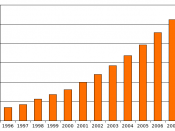In 1975 federal law mandated the Education for all Handicapped Children Act, also known as EHA or Public Law 94-142. This law originated as a way to ensure that students with disabilities receive an appropriate and free public education. Grants were given to states for the education of children with disabilities. In 1975 a free, appropriate education meant that all individuals that were identified as having a handicap were entitled to have an education at public expense, under supervision and direction of the states' educational agency. This included preschool through high school. The free appropriate education had to have conformity with the individualized education program required. Conformity meant that the students IEP had to be addressed in the educational setting. Since then, it has been amended many times, while always maintaining its original purpose-to ensure that children with disabilities have access to a free appropriate public education. This law eventually evolved into the Individuals with Disabilities Education Act(Public Law 108-446), last updated in 2004.
The 6 key components of the original PL 94-142 are as follows:a)Free, appropriate public education (FAPE); No one can force a person out of the public schools due to any diagnosis or special need. All students have the right to an education regardless of their disabilities.
b)Least Restrictive Environment (LRE): The student will be given the LEAST amount of help that is required to help them succeed. Ex: If they can succeed in an inclusive classroom with pull-out resources classes instead of being placed in a special education classroom all day. When you go back to what the law was and what the law is now, there are some big changes but we are far from being where we need to be in special education. When the original law Public Law 94-142 was put into...


